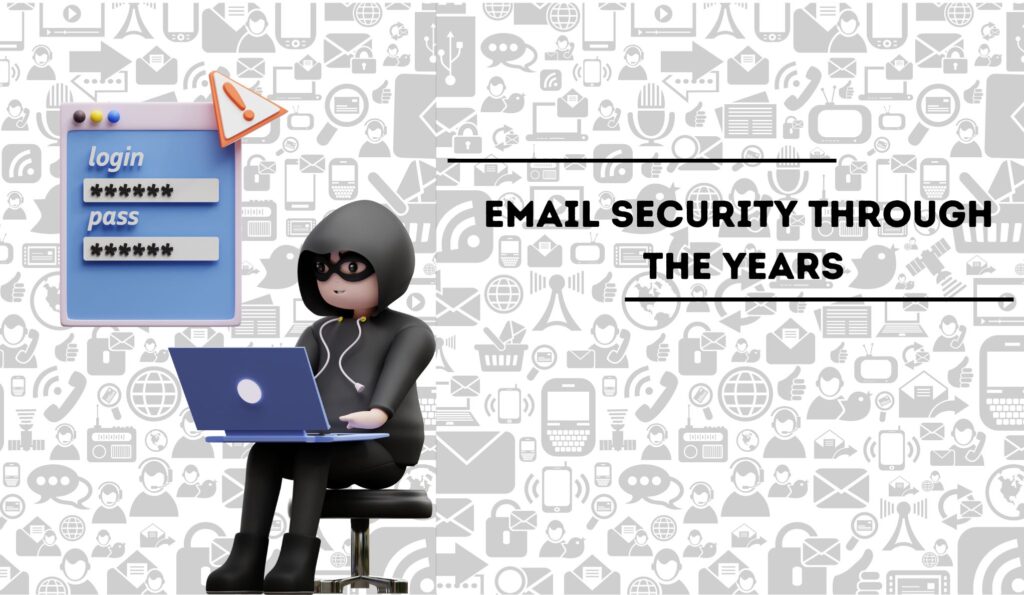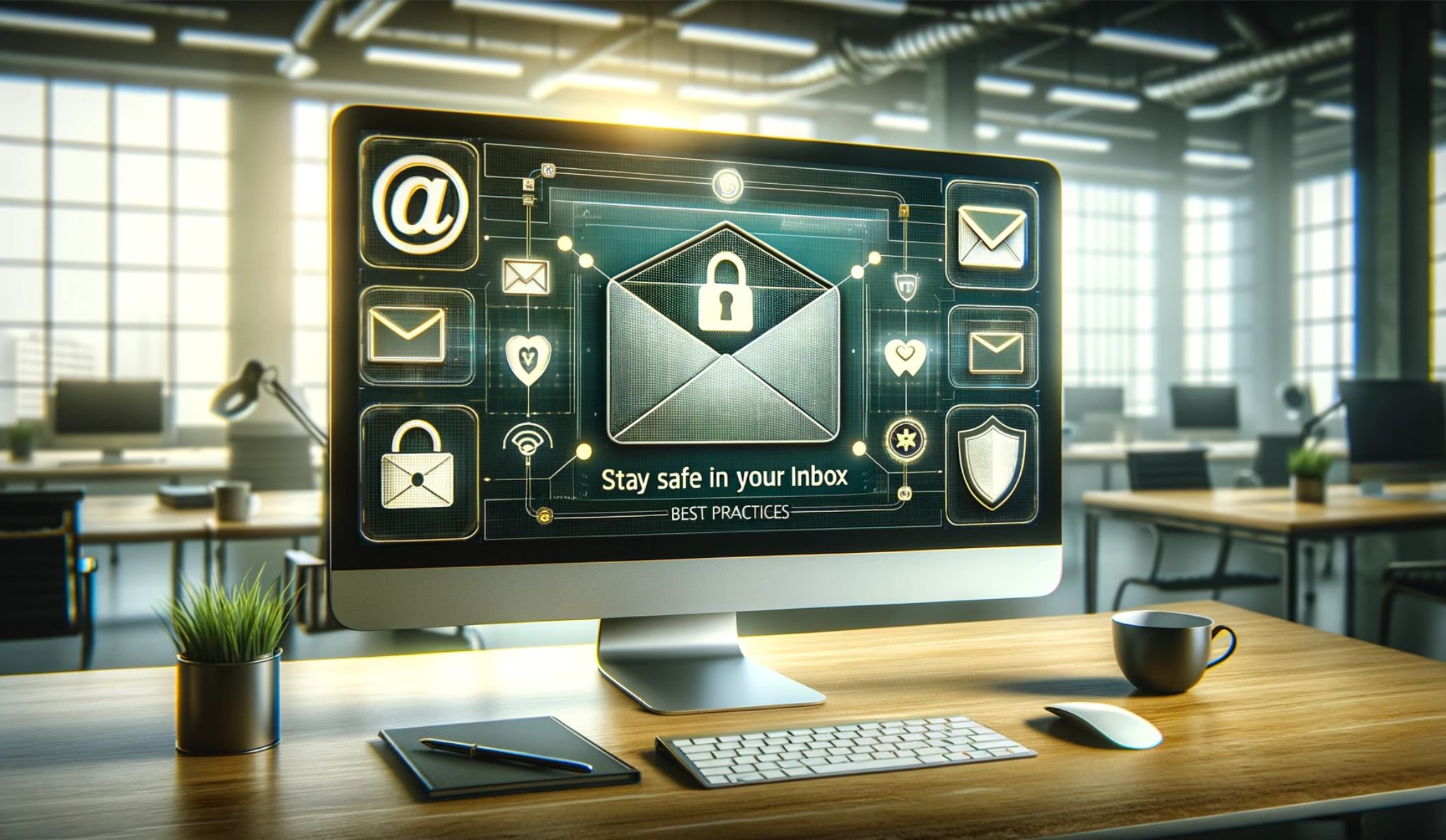Email communication remains a cornerstone of both personal and professional interaction in the digital world. As we progress into 2024, the landscape of email security continues to evolve, adapting to new challenges and threats. This dynamic environment makes understanding and implementing the best practices in email security more crucial than ever. Whether you’re a business owner, an employee, or an individual using email for personal communication, staying informed about the latest trends and protective measures is key to safeguarding your sensitive information.
Understanding Email Security
Email security is a dynamic field that continually evolves to counter the ever-changing tactics of cybercriminals and protect the digital communication lifeline of individuals and organizations.
What is Email Security?
Email security refers to the measures and techniques employed to protect email accounts and content from unauthorized access, loss, or compromise. It involves a range of practices from using strong passwords to sophisticated encryption methods. As the primary gateway for professional and personal communication, securing email systems is vital to prevent cyber threats such as hacking, phishing, and malware attacks.
The Role of Email Security in Modern Communication
In an era where digital communication is ubiquitous, the significance of email security cannot be overstated. With the increasing reliance on emails for transmitting confidential data, including personal details, financial information, and sensitive corporate data, securing these channels is not just a recommendation but a necessity. Effective email security measures ensure the integrity and confidentiality of information while maintaining the availability of email services for legitimate use.
Email Security Through the Years

The journey of email security from 2014 to 2024 highlights significant advancements and shifts. Earlier, email security focused mainly on basic spam filters and antivirus software. However, as cyber threats became more sophisticated, the focus shifted to advanced techniques like AI-driven threat detection and encryption protocols. This evolution underscores the need for continuous adaptation and enhancement of security measures.
Lessons from Past Email Security Practices (2015, 2017, 2020)
Reflecting on the past practices in email security reveals invaluable lessons. In 2015, the emphasis was on awareness of phishing scams. By 2017, the integration of two-factor authentication became prominent. The year 2020 brought a heightened focus on securing remote communication due to the global shift towards remote working. These milestones illustrate the importance of learning from past experiences to better prepare for future threats.
Implementing Advanced Email Encryption
Encryption is a fundamental component of modern email security. It involves encoding email content to ensure that only authorized parties can access the information. In 2024, adopting advanced encryption technologies is not just an option but a necessity, especially when dealing with sensitive data.
Utilizing Two-Factor Authentication
Two-factor authentication adds an extra layer of security to email accounts by requiring a second form of verification, typically a code sent to a mobile device, in addition to a password. This practice significantly reduces the risk of unauthorized access, making it a critical component of email security.
Regular Software and Security Updates
Keeping email software and security systems updated is essential. Regular updates not only introduce new features but also patch vulnerabilities that could be exploited by cybercriminals. Staying current with updates is a simple yet effective way to enhance email security.
Specific Email Security Strategies
In the realm of email security, one size does not fit all. Different environments and platforms require tailored approaches. Corporate settings demand stringent measures due to the volume and nature of the data involved. Similarly, various email platforms have their unique features and security settings that must be optimized for maximum protection.
For Corporate Environments
Corporate environments are prime targets for cyber attacks due to the valuable data they handle. Protecting this environment requires a multi-layered approach to security.
Corporate Email Security Best Practices
In a corporate setting, email security best practices revolve around both technology and employee behavior. The use of advanced spam filters, email encryption, and secure email gateways is crucial. Equally important is training employees to recognize and report phishing attempts and suspicious emails. Regular security audits and updating email policies to align with current threats are also essential steps.
Enterprise Email Security Best Practices
For larger enterprises, email security takes on an added layer of complexity. These organizations should implement robust security protocols such as end-to-end encryption, strong password policies, and regular security training sessions for all employees. Additionally, enterprises should consider implementing advanced threat protection solutions that use artificial intelligence to detect and respond to sophisticated email threats.
For Different Platforms
Different email platforms come with their own set of features and potential vulnerabilities. Tailoring security strategies to each platform is key to ensuring robust protection.
G Suite and Microsoft 365 Email Security Best Practices
For users of G Suite and Microsoft 365, it’s important to take advantage of the built-in security features these platforms offer. This includes using their advanced spam filters, enabling multi-factor authentication, and applying their respective email encryption options. Regularly reviewing and customizing the security settings to fit the organization’s needs is also vital.
O365 and Office 365 Email Security Best Practices
Users of O365 and Office 365 should focus on configuring security settings like anti-malware and anti-phishing policies provided within these platforms. Utilizing features such as Safe Links and Safe Attachments in Office 365 can significantly reduce the risk of malicious content reaching the inbox. Additionally, implementing data loss prevention policies can help in safeguarding sensitive information.
Addressing Key Threats in Email Security

In the ongoing battle against cyber threats, awareness and preparedness are your best allies. Understanding the key threats in email security is the first step toward implementing effective defense strategies.
Combating Phishing Attacks
Phishing remains one of the most prevalent threats in email security. These deceptive practices involve sending emails that appear to be from reputable sources to steal sensitive information. To combat phishing, it’s crucial to educate employees about recognizing such emails. Tips include being wary of emails requesting confidential information, checking for misspellings or incorrect domains in email addresses, and not clicking on unknown links or attachments.
Preventing Malware in Emails
Malware, or malicious software, can be spread through email attachments or links. To prevent malware infections, organizations should use advanced email scanning tools that detect and block malicious content. Employees should be instructed to avoid opening attachments or clicking links from unknown or untrusted sources. Regular backups and updating antivirus software also play a key role in defending against malware threats.
Best Practices for DKIM (DomainKeys Identified Mail)
DKIM is an email authentication method designed to detect email spoofing. Implementing DKIM involves setting up a digital signature attached to emails, which verifies that the message was sent from a legitimate source. Best practices for DKIM include properly setting up DKIM records, regularly updating these records, and monitoring for any authentication failures.
Email Security for Employees and End-Users
Ensuring email security is not solely a task for IT professionals; it involves the active participation of every employee and end-user. Understanding and implementing basic email security practices can significantly reduce the risk of breaches.
Training and Awareness
Regular training sessions and awareness programs are crucial in empowering employees and end-users with the knowledge to identify potential email threats. These sessions should cover the basics of email security, how to identify phishing emails, the importance of using strong passwords, and the protocols to follow when a security threat is identified.
Email Security Best Practices for Employees
Employees play a pivotal role in maintaining email security. They should be encouraged to use strong, unique passwords for their email accounts and change them regularly. Caution should be exercised when opening emails from unknown senders, especially when they contain attachments or links. Employees should also be familiar with the company’s email security policy and know whom to contact in case of a security concern.
End-User Email Security Best Practices
For end-users, especially those who may not have access to extensive corporate security resources, basic best practices are vital. This includes using a reputable email service with robust security features, enabling two-factor authentication, being vigilant about phishing attempts, and regularly updating their devices and software to protect against vulnerabilities.
Compliance and Standards in Email Security
Adhering to compliance standards and regulations is not just a legal requirement; it’s a cornerstone in building a robust email security framework. Organizations must be aware of and comply with various standards to protect sensitive information and maintain trust.
NIST Guidelines for Email Security
The National Institute of Standards and Technology (NIST) provides comprehensive guidelines for email security. These guidelines cover aspects such as encryption, access controls, and incident response. Organizations should regularly review and align their email security practices with NIST recommendations to ensure they are following industry best practices and maintaining a high level of security.
Adhering to Industry Standards and Regulations
Different industries may have specific regulations governing email security. For instance, the healthcare sector must comply with HIPAA (Health Insurance Portability and Accountability Act) standards, which include specific rules for email communication. Similarly, financial institutions often need to adhere to regulations like GLBA (Gramm-Leach-Bliley Act). It’s crucial for organizations to understand and implement these regulations to not only avoid legal repercussions but also to safeguard sensitive data effectively.
Resources and Tools for Email Security
Equipping oneself with the right tools and resources is a critical step in enhancing email security. From software solutions to educational materials, there are numerous aids available to help individuals and organizations strengthen their email defenses.
Trend Micro and Other Security Tools
Trend Micro is a notable example of a comprehensive email security solution. It offers features like advanced threat protection, phishing detection, and data loss prevention. Besides Trend Micro, there are other tools such as Mimecast, Proofpoint, and Barracuda that provide robust email security services. These tools often include spam filtering, malware protection, and encryption capabilities, essential for safeguarding email communication.
Guides and PDF Resources
For those looking to deepen their understanding of email security, numerous guides and PDF resources are available online. These materials range from basic tutorials for beginners to advanced guides for IT professionals. Websites of cybersecurity organizations, tech blogs, and platforms like the Cybersecurity & Infrastructure Security Agency (CISA) often provide valuable, up-to-date information.
Online Quizzes for Self-Assessment
Online quizzes and assessments can be beneficial for testing one’s knowledge of email security. These tools not only help in identifying areas of strength but also highlight aspects that require further understanding or improvement. They can be found on educational platforms and cybersecurity websites, offering a practical and interactive way to gauge one’s email security awareness.
Conclusion
Navigating the complexities of email security in 2024 requires vigilance and continuous adaptation. From employing strong passwords to understanding platform-specific security features, the strategies discussed in this article provide a comprehensive approach to safeguarding email communications. Remember, securing your emails is not a one-time effort but an ongoing commitment to protecting your digital information against evolving cyber threats. By staying informed and proactive, individuals and organizations can effectively shield themselves from the vulnerabilities that come with digital communication.








